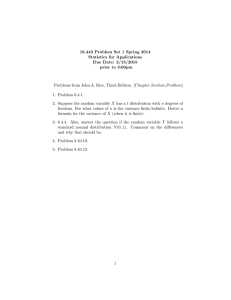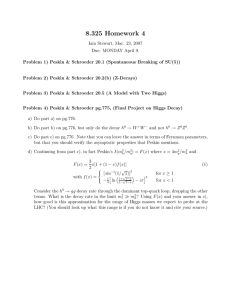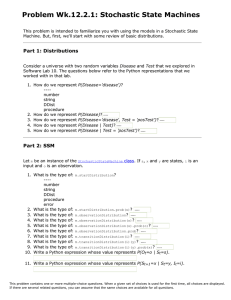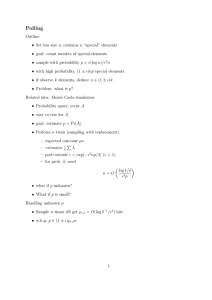Document 13470502
advertisement
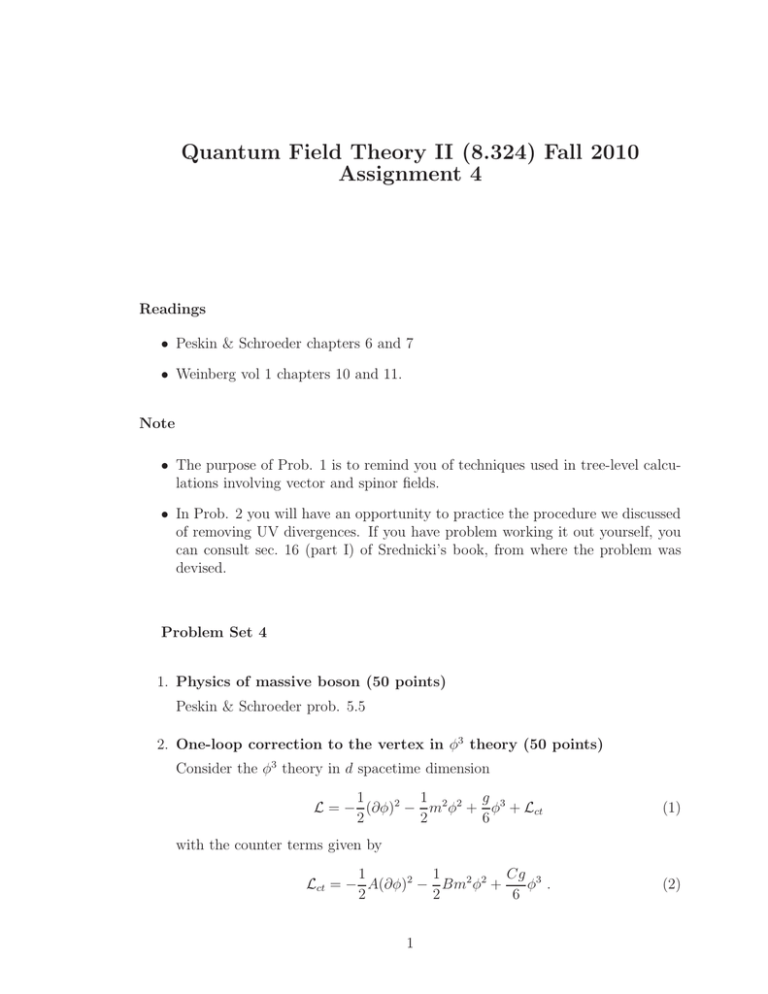
Quantum Field Theory II (8.324) Fall 2010 Assignment 4 Readings • Peskin & Schroeder chapters 6 and 7 • Weinberg vol 1 chapters 10 and 11. Note • The purpose of Prob. 1 is to remind you of techniques used in tree-level calcu­ lations involving vector and spinor fields. • In Prob. 2 you will have an opportunity to practice the procedure we discussed of removing UV divergences. If you have problem working it out yourself, you can consult sec. 16 (part I) of Srednicki’s book, from where the problem was devised. Problem Set 4 1. Physics of massive boson (50 points) Peskin & Schroeder prob. 5.5 2. One-loop correction to the vertex in φ3 theory (50 points) Consider the φ3 theory in d spacetime dimension 1 1 g L = − (∂φ)2 − m2 φ2 + φ3 + Lct 2 2 6 (1) with the counter terms given by 1 1 Cg 3 Lct = − A(∂φ)2 − Bm2 φ2 + φ . 2 2 6 1 (2) Note that A, B, C ∼ O(g 2) and we have determined A and B to this order in lectures. C will be determined below. We can define an exact three-point vertex function V3 (k1 , k2 , k3 ) as the sum of one-particle irreducible diagrams with three external lines carrying momenta k1µ , k2µ , and k3µ , all incoming, with k1 + k2 + k3 = 0 by momentum conservation.1 The physical coupling g is defined by requiring V3 (0, 0, 0) = g . (3) (a) Write down all the 1PI diagrams which contribute to V3 at order O(g 3). (b) Use Feynman’s formula and Wick rotation to evaluate the diagrams in (a). In your final expression you should have done all the momentum integrals, but leave the integrals over the Feynman parameters. (c) What are the spacetime dimensions for which the vertex corrections at this order are UV finite? (d) Now take d = 6 and determine C (use the dimensional regularization) using (3). (e) In d=6, evaluate your V3 (k1 , k2 , k3 ), which is now finite and fully deter­ mined, in the limit |k32 | ≫ m2 , |k12 |, |k22 |. Comment on your result. 1 In adopting this convention, we allow ki0 to have either sign; if ki is the momentum of an external particle, then the sign of ki0 is positive if the particle is incoming, and negative if it is outgoing. 2 MIT OpenCourseWare http://ocw.mit.edu 8.324 Relativistic Quantum Field Theory II Fall 2010 For information about citing these materials or our Terms of Use, visit: http://ocw.mit.edu/terms.
